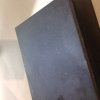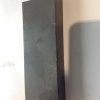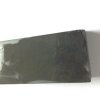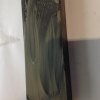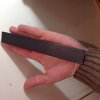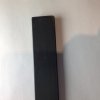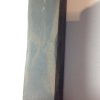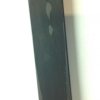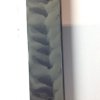Long time lurker but first time poster here,
I've lurked the forums for a long time and usually manage to figure out the answer to anything I need with a few searches, but the last 3 hones I've acquired have left me stumped (as well as an old hone which was my great grandfathers) and despite spending many hours searching the Internet. So I've bit the bullet and made an account in the hope you gents can help (I've heard HAD is contagious however so I've got to be careful now
 )
)
the first is a 6 x 1 x 3/4" dark grey / slightly blue hone, which has an almost metallic sheen to it, it is hard as hell and took a lot of lapping even with a DMT extra course stone for the bulk of the work) it has a sparkly surface but the crystals responsible remain invisible under 60 x mag, (not glittery enough to be a la lune). The slurry is an off white which dries with a very slightly green tint). No real distinguishing marks aside from a few small transparent dots on the surface.
Pan orange piece of wax is stuck to one end (possibly some form of identification) and the other end remains as raw unlapped Rock, the other side of the stone has some original cutting lines present.
Any further pictures will happily be added if needed.
Rob
I've lurked the forums for a long time and usually manage to figure out the answer to anything I need with a few searches, but the last 3 hones I've acquired have left me stumped (as well as an old hone which was my great grandfathers) and despite spending many hours searching the Internet. So I've bit the bullet and made an account in the hope you gents can help (I've heard HAD is contagious however so I've got to be careful now

 )
)the first is a 6 x 1 x 3/4" dark grey / slightly blue hone, which has an almost metallic sheen to it, it is hard as hell and took a lot of lapping even with a DMT extra course stone for the bulk of the work) it has a sparkly surface but the crystals responsible remain invisible under 60 x mag, (not glittery enough to be a la lune). The slurry is an off white which dries with a very slightly green tint). No real distinguishing marks aside from a few small transparent dots on the surface.
Pan orange piece of wax is stuck to one end (possibly some form of identification) and the other end remains as raw unlapped Rock, the other side of the stone has some original cutting lines present.
Any further pictures will happily be added if needed.
Rob
Attachments
Last edited:









